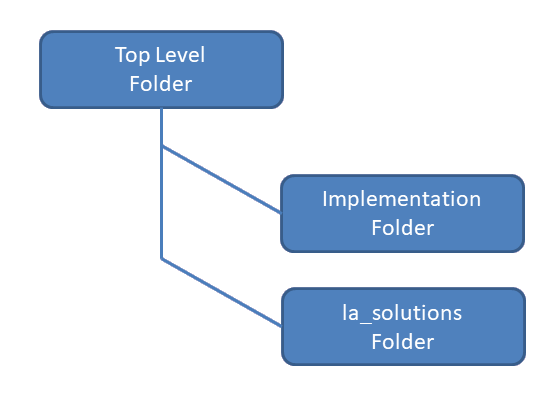MicroStation Python: LA Solutions Project Structure
Simple projects need only one Python file (*.py) that contains code.
Larger projects contain several files.
Some files are used by more than one project.
When I write a Python example, I like to re-use components (Python modules) where possible. I've designed a folder structure that I hope is easy to understand and use.

Top-Level Folder
The top-level folder contains a set of example Python files that are brief. Each example imports the implementation file from an appropriately-named sub-folder.
For example, if you download the Export Text Elements project,
you will find la_solutions_export_text_elements.py in the top-level folder.
Implementation Folder
Each example imports the implementation file from an appropriately-named sub-folder.
For example, if you download the Export Text Elements project, you will find …
la_solutions_export_text_elements.pyin the top-level folderexport_text_elements.pymodule in theExportTextfolder
Utilities and other Folders
Some samples are stand-alone and don't use any additional files.
However, several examples use (in Python-speak, import) other Python files.
You'll find those in the la_solutions folder.
For example, configuration_vars.py, which contains helper functions that work with MicroStation
configuration variables.
Other sub-folders include the la_solutions sub-folder that contains Python modules that
are useful in several projects.
For example, la_solutions\version_info.py provides the VersionInfo class.
It's a simple way to encapsulate an app's version number and format it consistently.
Python __init__.py
You'll observe that those sub-folders have an empty file named __init__.py.
That file is a signal to Python that the *.py code files in that folder are intended
to be used by a project.
Read
more about __init__.py
on web sites that deal with Python.
Trademarks
All trademarks are acknowledged. Trademarks may be registered in some jurisdictions.
![]() Contact LA Solutions using this enquiry form.
Contact LA Solutions using this enquiry form.
|
Home |
Updated on 20-Jan-2025 | Copyright © 2025…2025 Jon Summers |
